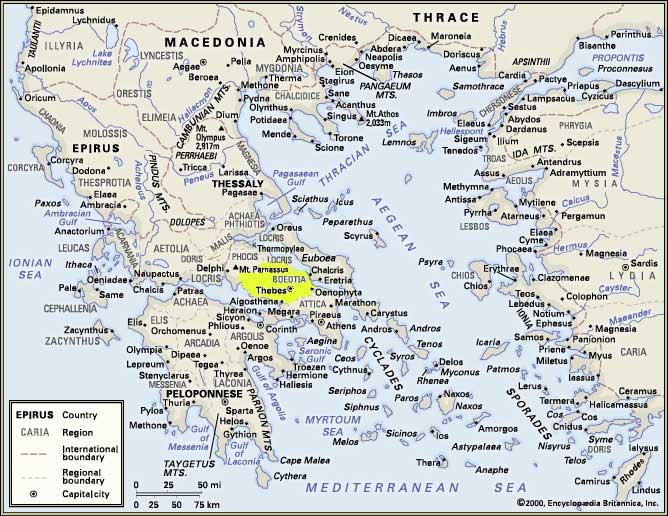
Boeotia
District of ancient Greece with a distinctive military, artistic, and political history. It corresponds somewhat to the modern nomós (department) of Boeotia, the administrative centre of which is Levádhia. The nomós extends farther to the northwest, however, to include part of ancient Phocis (Fokís). It is bounded by Attica (Attikí; southeast), the Gulf of Corinth (south), Phocis (west), the Gulf of Euboea (east), and the nomós of Fthiótis (north).
Boeotia has two extensive fertile plains separated by a low ridge, an outlier of Mount Helicon (5,735 feet [1,748 metres]) on which Thebes (Thívai) stands. The northern plain is a drained basin that formerly contained Lake Kopais, once the largest lake in Greece, and now a fertile plain growing cereals and cotton and supporting pedigreed cattle. The southern plain is watered by the Asopós River.
In classical times the much-reorganized Boeotian defensive league figured prominently in the rivalry between Athens and Sparta. The league led an uprising against Sparta during the Corinthian War (395-387 BC) and in the Battle of Chaeronea (338) was thoroughly decimated in the struggle to preserve Greek independence from Macedonia. When Boeotia rose again (335) against Alexander III the Great, it was destroyed and thereafter was of little consequence. (Encyclopaedia Britannica)
